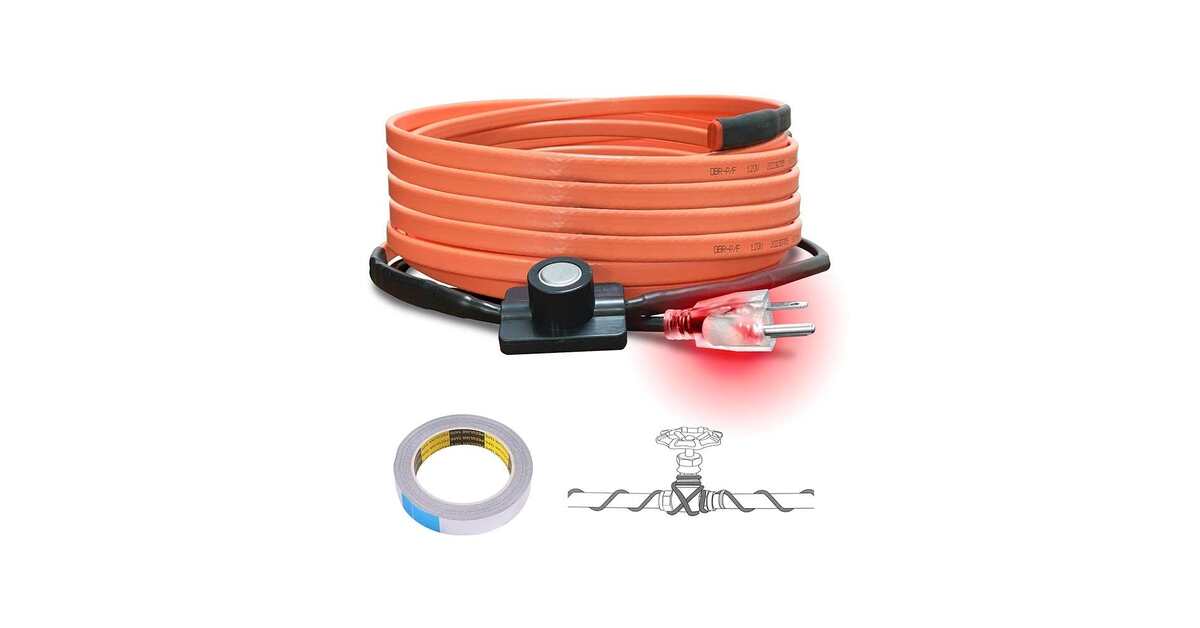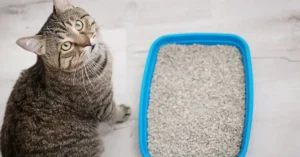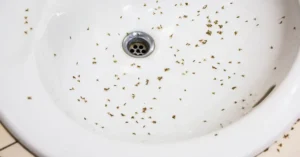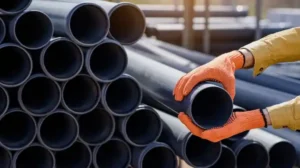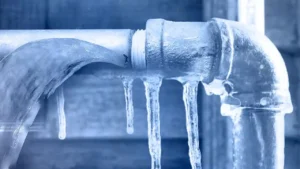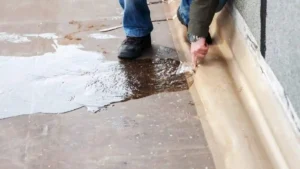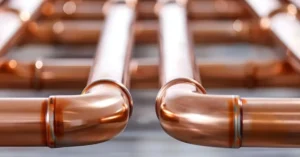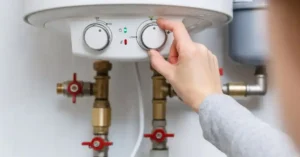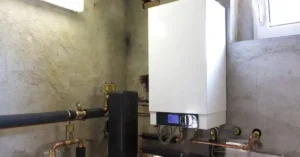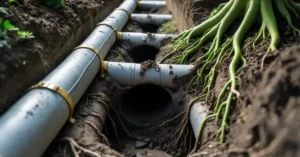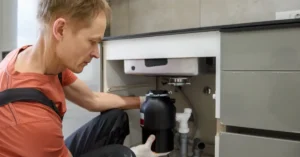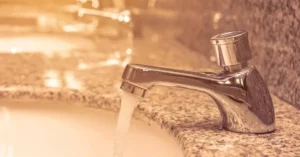Winter brings the serious risk of frozen pipes, which can cause costly and catastrophic damage. Protecting your home’s plumbing system is not just an expense; it is a vital safeguard against burst pipes. Installing heat tape for pipes correctly is the best way to prevent this common cold-weather disaster.
This guide will give you the expertise and knowledge you need to safely and effectively apply this crucial layer of protection. Learn exactly how to install heat tape on water pipes using proven, professional methods. This is an essential home maintenance skill for anyone living in a cold climate.
What is Heat Tape for Water Pipes?
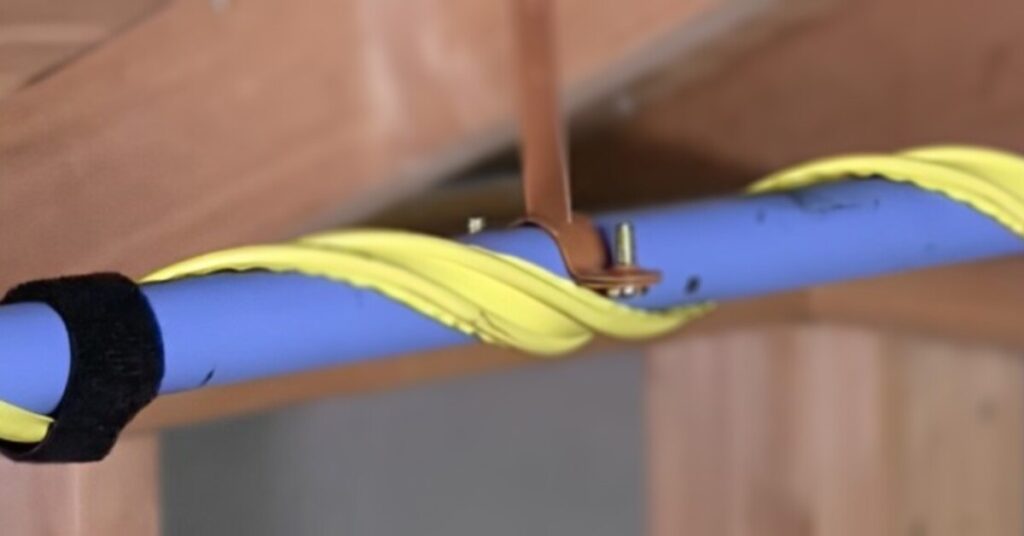
Heat tape, also called heating cable or trace heating, is an electrical element designed to keep pipe surfaces above the freezing point. It acts as a defense mechanism for exposed plumbing, ensuring a constant flow of water even when temperatures drop sharply. The concept is simple: electrical resistance within the cable creates gentle warmth, directly countering the cold that leads to ice formation.
This heated tape for water pipes is usually applied to exterior lines, pipes in unheated basements, crawl spaces, attics, and near foundation walls. Proper use of heat tape avoids the expense and mess of a burst pipe, which often totals thousands in water damage and repair.
Types Of Heat Tapes
Self-Regulating Heat Tape
Self-regulating heat tape adjusts its heat output based on pipe temperature. When pipes get colder, it produces more heat. As pipes warm up, it reduces power consumption automatically.This type costs more upfront but saves money on energy bills. It’s also safer because it won’t overheat. You can overlap self-regulating tape without worry, making installation easier in tight spaces.
Constant Wattage Heat Tape
Constant wattage tape produces the same amount of heat regardless of temperature. It’s less expensive than self-regulating options but requires more careful installation and monitoring.This type works well for longer pipe runs and colder climates. However, you must never overlap constant wattage tape. Doing so creates dangerous hot spots that could start fires. Always pair this type with a thermostat for safe operation.
Heat Cable
Heat cable is similar to heat tape but comes in a round wire form. It’s flexible and easy to spiral around pipes. This option works great for irregular pipe shapes and valve areas where flat tape doesn’t conform well.Heat cables typically use constant wattage technology. They require the same safety precautions as constant wattage tape.
How Heat Tapes Protect Pipes from Freezing
Water expands when it freezes. This expansion creates enormous pressure inside pipes. Even strong metal pipes can crack or burst under this force. A single burst pipe can release hundreds of gallons of water into your home.Water pipe heat tape maintains temperatures above 32°F (0°C). The heating element transfers warmth directly to the pipe surface. This prevents ice crystals from forming inside the pipe.Modern heated tape for water pipes includes temperature sensors. These sensors monitor pipe temperature constantly. When the temperature drops near freezing, the tape activates automatically. Once pipes warm up sufficiently, the system shuts off to conserve energy.
The protection extends beyond just preventing frozen pipes. Heat tape also stops ice dams from forming at pipe outlets. It keeps water moving through the system, which prevents stagnant water from freezing in low-flow areas.
Benefits of Heat Tape for Pipes
Installing heat tape on pipes offers protection that pays for itself quickly. Here’s what you gain:
Prevents Costly Damage
Burst pipes cause thousands of dollars in water damage. Heat tape costs a fraction of one repair bill. It’s insurance that works 24/7 during winter months.
Maintains Water Access
Frozen pipes mean no water for drinking, cooking, or bathing. Heat tape keeps water flowing when you need it most. You won’t face morning surprises when taps don’t work.
Energy Efficient
Modern heat tape uses minimal electricity. Self-regulating types only draw power when needed. Most systems cost less than $10 per month to operate, even in harsh climates.
Easy Installation
You don’t need professional skills to install heat tape. Most homeowners can complete the project in a few hours with basic tools. The upfront time investment prevents future headaches.
Versatile Application
Heat tape works on metal pipes, PVC, and other materials. You can use it indoors or outdoors. It adapts to various pipe sizes and configurations.
Long-Term Solution
Quality heat tape lasts 10 years or more with proper care. Once installed, it requires minimal maintenance. Just inspect it annually before winter arrives.
How to Install Heat Tape on Water Pipes Properly
Step 1: Choose the Right Heat Tape
Measure all pipes that need protection. Purchase heat tape long enough to cover the entire vulnerable length. Add 10% extra for connections and overlaps if using self-regulating tape.Check the tape’s temperature rating. Make sure it matches your climate’s coldest temperatures. Read the manufacturer’s specifications for pipe material compatibility.
Step 2: Gather Your Tools and Materials
You’ll need:
- Heat tape (correct length and type)
- Electrical outlet (GFCI protected)
- Aluminum foil tape
- Pipe insulation
- Scissors or utility knife
- Measuring tape
- Safety gloves
Step 3: Prepare the Pipes
Clean the pipe surface thoroughly. Remove dirt, rust, and old insulation. Heat tape needs direct contact with the pipe to work effectively.Dry the pipes completely. Moisture between tape and pipe reduces heating efficiency. Check for any leaks or damage while you’re inspecting.
Step 4: Apply the Heat Tape
Start at the outlet end where the heat tape plugs in. Position the tape along the bottom of the pipe. This placement allows heat to rise naturally around the entire pipe.For straight runs, lay the tape in a straight line along the pipe’s length. Don’t spiral constant wattage tape. Spiraling causes hot spots and wastes energy.Press the tape firmly against the pipe. Make sure there are no air gaps. The heating element must touch the pipe surface directly.
Step 5: Secure the Heat Tape
Use aluminum foil tape every 12 inches to hold the heat tape in place. Wrap the foil tape around both the heat tape and pipe. This creates better heat transfer and prevents the heat tape from sagging.Avoid regular duct tape or electrical tape. These materials don’t conduct heat well and can degrade over time. Aluminum foil tape is specifically designed for this application.
Step 6: Add Insulation
Cover the heat tape and pipe with foam pipe insulation. Insulation traps heat close to the pipe, making the system more efficient. It also protects the heat tape from physical damage.Cut the insulation to length and wrap it around the pipe. Seal all seams with aluminum foil tape. Leave the heat tape’s plug end accessible.
Step 7: Connect to Power
Plug the heat tape into a GFCI-protected outlet. These outlets prevent electrical shocks if water contacts the connection. Never use an extension cord unless the manufacturer specifically approves it.Check that the thermostat light activates if your tape has one. Test the system by letting it run for several hours. Feel the pipe to confirm it’s warming properly.
Step 8: Label the Installation
Place labels near the outlet identifying it as heat tape. This prevents someone from unplugging it accidentally. Note the installation date for future maintenance records.
You can read about: How to Install a Heat Pump Water Heater
Safety Precautions
Heat tape uses electricity in potentially wet environments. Following safety rules prevents fires and electrical hazards.
Never Overlap Constant Wattage Tape
Overlapping creates dangerous hot spots. These areas can melt pipes or start fires. If you need coverage at intersections, use self-regulating tape.
Inspect Before Each Winter
Check the entire length of heat tape before cold weather arrives. Look for cracks, fraying, or damaged areas. Replace any tape that shows wear.
Use GFCI Protection
Always plug heat tape into GFCI outlets. These devices shut off power immediately if they detect electrical faults. They’re essential for wet locations.
Follow Manufacturer Instructions
Each product has specific installation requirements. Read the manual completely before starting. Don’t assume all heat tapes install the same way.
Don’t Use on Fuel Lines
Heat tape is only for water pipes. Never apply it to gas lines, fuel lines, or oil pipes. Use products specifically designed for those applications.
Check Wattage Limits
Make sure your electrical circuit can handle the heat tape’s power draw. Don’t overload circuits with multiple heating devices.
Keep Combustibles Away
Don’t let heat tape touch wood, insulation, or other flammable materials directly. Use the recommended pipe insulation as a barrier.
Install Properly Rated Tape
Outdoor tape differs from indoor tape. Use UL-listed products rated for your specific application. Don’t use indoor tape outside.
Ensure Reliable Water Pipes with Heat Tapes
Professional installation makes a difference when you’re dealing with complex plumbing systems. While many homeowners handle basic heat tape installation successfully, certain situations call for expert help.Derks Plumbing brings years of experience to every project. Our team understands local climate challenges and knows which solutions work best. We install heat tape correctly the first time, ensuring your pipes stay protected all winter.Beyond heat tape, we offer comprehensive services of Water Heater Installation in Eagle Rock and surrounding areas. Our technicians assess your entire system to identify vulnerable areas you might miss.
Professional installation includes proper electrical connections, optimal tape placement, and thorough testing. We make sure your heat tape meets all safety codes and manufacturer specifications. You get peace of mind knowing your pipes have maximum protection.Contact us before winter arrives. We’ll evaluate your plumbing, recommend the right heat tape type, and complete installation quickly. Don’t wait until pipes freeze to take action.
Conclusion
Learning how to install heat tape on water pipes protects your home from expensive winter damage. The process is straightforward when you follow proper steps and safety guidelines.Choose the right type of heat tape for your needs. Self-regulating tape offers convenience and safety, while constant wattage tape works well for budget-conscious installations. Prepare pipes properly, secure the tape firmly, and add insulation for best results.Regular maintenance keeps your system working reliably. Inspect heat tape each fall and replace any damaged sections immediately.
With proper care, heat tape provides years of trouble-free protection.Don’t let frozen pipes catch you unprepared. Install heat tape now and enjoy worry-free winters. Your plumbing system and your wallet will thank you.
FAQs
How much does heat tape cost to run?
Self-regulating heat tape typically costs $5 to $10 per month during winter. Constant wattage tape uses more energy, averaging $10 to $20 monthly. Actual costs depend on local electricity rates and how cold your climate gets.
Can I install heat tape myself?
Yes, most homeowners can install heat tape with basic tools. The process takes a few hours and requires following manufacturer instructions carefully. Complex installations or commercial applications may benefit from professional help.
How long does heat tape last?
Quality heat tape lasts 10 to 15 years with proper installation and maintenance. Annual inspections help identify wear before problems develop. Replace tape if you notice cracks, exposed wires, or performance issues.
Do I need to turn off heat tape in summer?
Self-regulating heat tape can stay plugged in year-round. It won’t activate when temperatures are warm. Constant wattage tape with a thermostat also works automatically. Unplugging saves a small amount of standby power if desired.
What temperature does heat tape maintain?
Most heat tape keeps pipes between 40°F and 50°F. This range prevents freezing while conserving energy. Self-regulating tape adjusts automatically to maintain safe temperatures.

